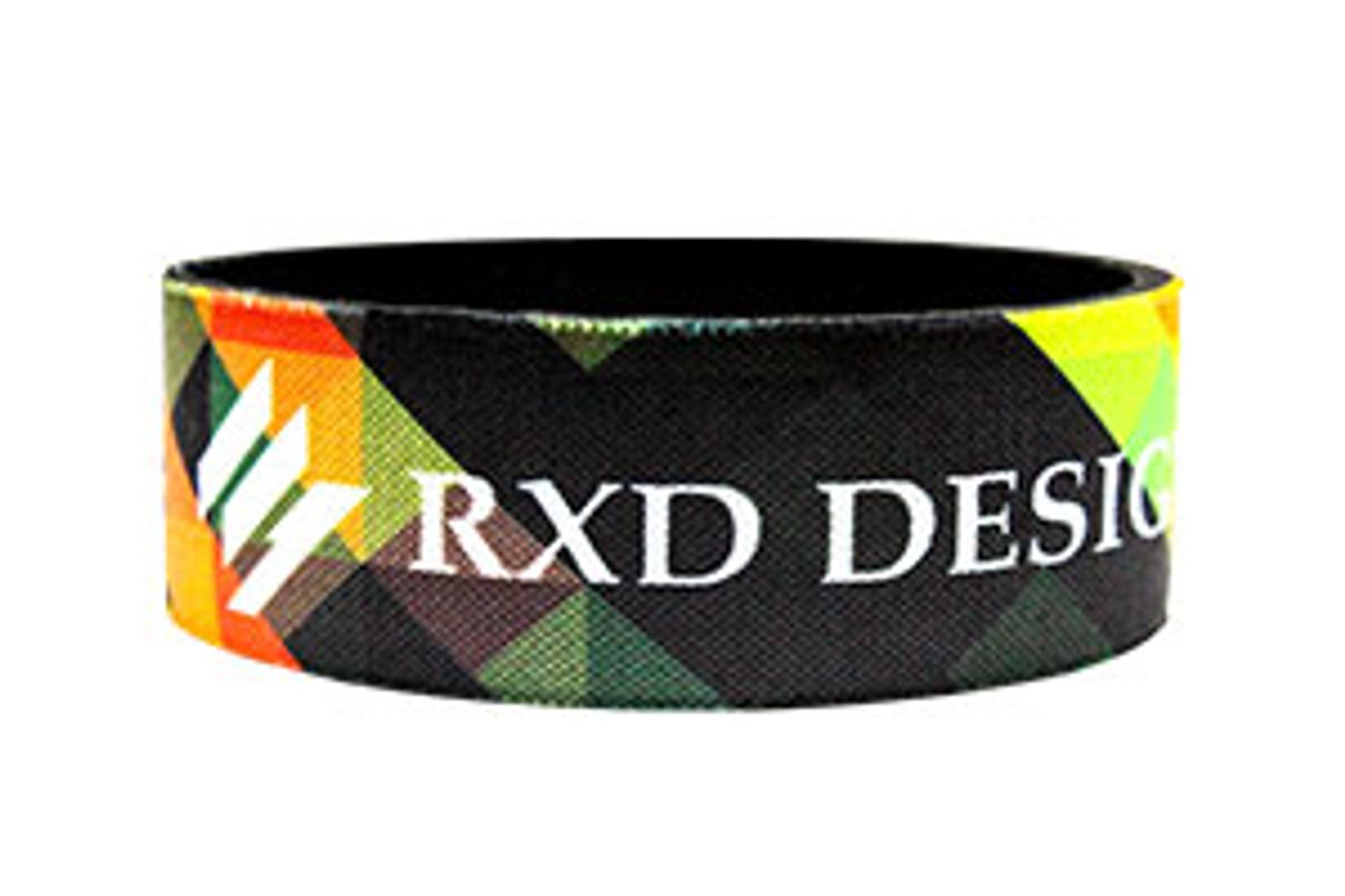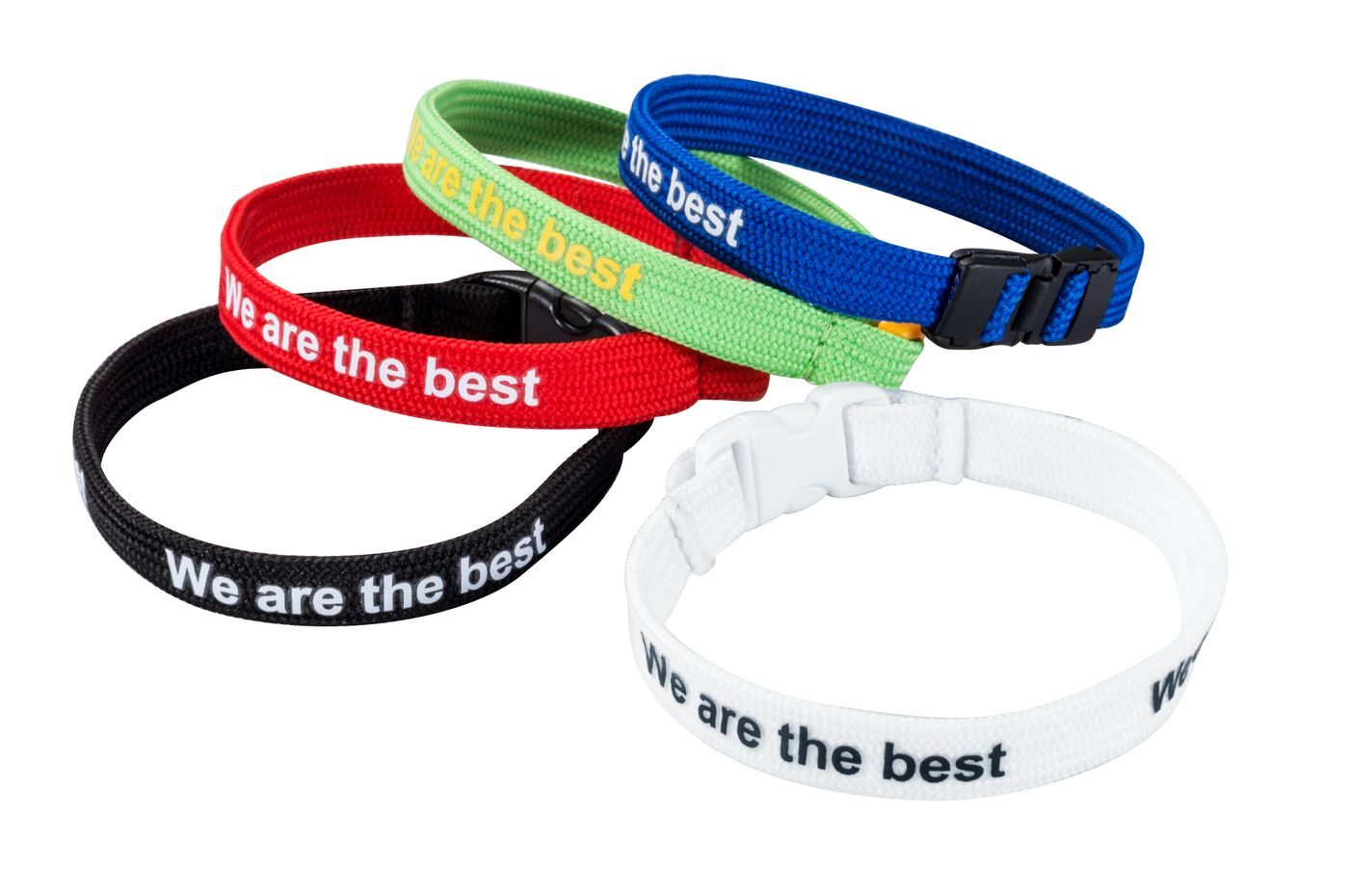Wristbands have become increasingly popular and serve many purposes. From fashion accessories to wearable technology, these versatile bands adorn the wrists of people across the globe. But what is a wristband? Why has it gained such widespread popularity? What are some common wristbands’ meaning?
A wristband is a simple yet functional bracelet worn around the wrist. It typically consists of a flexible band, often made of fabric, silicone, plastic, or metal, that comfortably encircles the wrist. Wristbands come in various sizes, styles, and colors, making them suitable for various purposes.
Is a Wristband a Bracelet?
Yes, a wristband can be considered a type of bracelet. Bracelets are ornamental bands worn on the wrist. A wristband can be decorative, functional, or promotional, and it can come in various styles and designs to suit your preferences and needs.
Purpose of Wristbands
Custom wristbands are helpful for various purposes, including tracking activity, monitoring health, and displaying information. Here are some everyday purposes of a wristband:
Identification
A wristband can identify individuals in different settings. For example, in healthcare settings, patients wear wristbands that contain essential identification information, like their date of birth, name, and medical record number. This helps ensure accurate treatment and medication administration.
Security
A wrist band can be a security measure by indicating authorized access or entry. They can have features like tamper-evident closures to prevent unauthorized removal.
Promotion and Marketing
You can use wristbands for promotional purposes. For example, businesses and organizations may use banded wristbands as promotional items, often featuring their logo, slogan, or a specific marketing message. They can also be used as event souvenirs. Attendees of events may receive a wrist band as a souvenir or memento.
Fundraising and Charity
Wristbands are used in fundraising campaigns, with proceeds often going to a charitable cause. For instance, you may have seen colored silicone wristbands used to create awareness and funds for various charities and social issues.
Age Verification
Wristbands can be used to verify age at venues serving alcohol or events with age restrictions. Different colors may indicate different age groups.
Event Ticketing and Crowd Control
Wristbands can organize and manage large event crowds, helping staff quickly identify attendees with specific privileges or access levels. Electronic wristbands with embedded RFID or NFC technology are increasingly used for contactless event ticketing and cashless payment systems.
Accountability
Some organizations, like schools and childcare facilities, use wristbands to help account for the whereabouts of individuals, especially children.
Fashion and Personal Expression
Wristbands can also be worn as fashion accessories, like bracelets, or as a means of personal expression. People may wear wristbands with messages or symbols that hold personal significance.
Health and Fitness Tracking
Wristbands with fitness trackers are designed to monitor and record various health data like heart rate, steps taken, and sleep patterns.
Materials Used in Wrist Bands
Wristbands are commonly made from various materials, from silicone to leather, each with its properties and uses. Your custom wristband material often depends on the intended purpose, durability requirements, and cost considerations. Here are some common materials:
Silicone: Silicone wristbands are perhaps the most popular type. They are durable, flexible, waterproof, and come in various colors. Silicone wristbands are often used for promotional purposes, charity events, or fashion accessories. Silicone wristbands can actually be used as a grip enhancer (like when opening jars or holding hammers and so on) or a quick suitcase identifier!
Plastic: Plastic wristbands are lightweight, inexpensive, and available in many colors. A plastic wristband is often used for short-term events like festivals, concerts, or theme parks. They’re made from vinyl or polyethylene.
Tyvek: Tyvek wristbands are made from high-density polyethylene material. They are durable, tear-resistant, and water-resistant. These wristbands are often used for one-time admission to events because they are difficult to transfer or counterfeit.
Fabric: Fabric wristbands come from materials like polyester or nylon. They are comfortable to wear, and you can customize them with designs, logos, or text. A fabric wristband is used for music festivals, sports events, or souvenirs.
Vinyl: Vinyl wristbands are similar in appearance to plastic wristbands but are more durable. They are often used for multi-day events because they withstand wear and tear better than other materials.
Leather: Leather wristbands are more stylish and are often used as fashion accessories. A leather wristband can be plain or decorated with studs, embroidery, or other embellishments.
Metal: Metal wristbands are made from stainless steel, aluminum, or other metals. They are often used for high-end events or as jewelry.
Paper: While not as durable as other materials, paper wristbands can be cost-effective and sometimes used for short-term events like carnivals or school functions.
Neoprene: Neoprene wristbands come from synthetic rubber material. They are comfortable to wear and often used for sports events or as sweatbands.
Elastic: Elastic wristbands are made from stretchy materials like rubber or elastic bands. They are comfortable and often used for fitness tracking devices or medical identification.
Silicone: Silicone wristbands are perhaps the most popular type. They are durable, flexible, waterproof, and come in various colors. Silicone wristbands are often used for promotional purposes, charity events, or fashion accessories. Silicone wristbands can actually be used as a grip enhancer (like when opening jars or holding hammers and so on) or a quick suitcase identifier!
Plastic: Plastic wristbands are lightweight, inexpensive, and available in many colors. A plastic wristband is often used for short-term events like festivals, concerts, or theme parks. They’re made from vinyl or polyethylene.
Tyvek: Tyvek wristbands are made from high-density polyethylene material. They are durable, tear-resistant, and water-resistant. These wristbands are often used for one-time admission to events because they are difficult to transfer or counterfeit.
Fabric: Fabric wristbands come from materials like polyester or nylon. They are comfortable to wear, and you can customize them with designs, logos, or text. A fabric wristband is used for music festivals, sports events, or souvenirs.
Vinyl: Vinyl wristbands are similar in appearance to plastic wristbands but are more durable. They are often used for multi-day events because they withstand wear and tear better than other materials.
Leather: Leather wristbands are more stylish and are often used as fashion accessories. A leather wristband can be plain or decorated with studs, embroidery, or other embellishments.
Metal: Metal wristbands are made from stainless steel, aluminum, or other metals. They are often used for high-end events or as jewelry.
Paper: While not as durable as other materials, paper wristbands can be cost-effective and sometimes used for short-term events like carnivals or school functions.
Neoprene: Neoprene wristbands come from synthetic rubber material. They are comfortable to wear and often used for sports events or as sweatbands.
Elastic: Elastic wristbands are made from stretchy materials like rubber or elastic bands. They are comfortable and often used for fitness tracking devices or medical identification.

/filters:quality(80)/fit-in/630x380/blog/image-1699312984.png)

